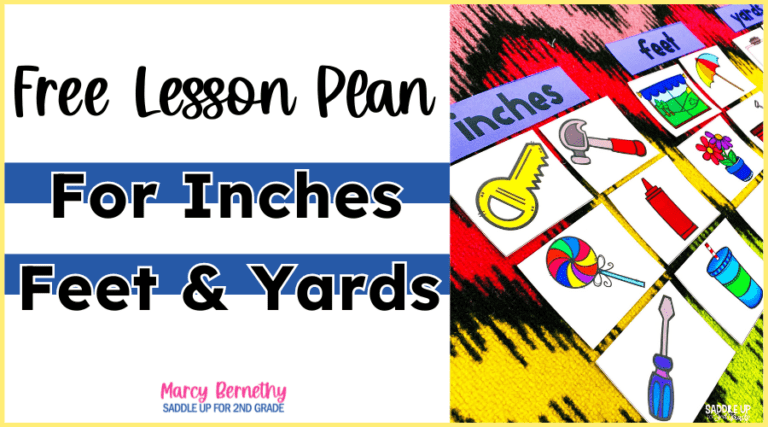

Join me for a FREE, Guided Math workshop to discover how to easily incorporate Guided Math into your current schedule!
Creating a solid foundation for basic addition is imperative for student learning and growth. Students need hands-on practice on a variety of different strategies for this important skill.
I’m going to be sharing with you 7 different basic strategies for addition that I used in my own second grade classroom that you can use to help your students gain a clear understanding of addition concepts. Learning these strategies helps students with basic addition facts and adding larger numbers.
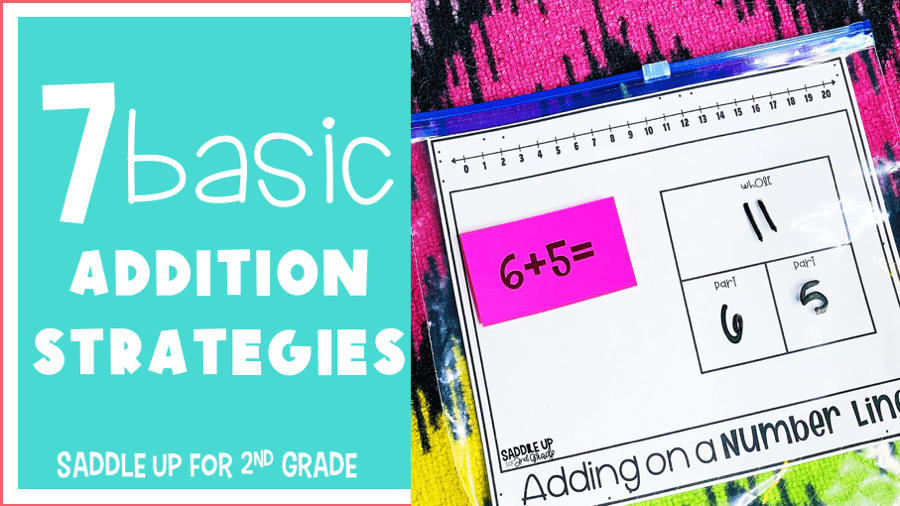
At the beginning of our addition unit, I always make this anchor chart to show all the different addition strategies we will learn. As a new strategy is introduced, it is added to our whole group chart. I also have my own students create the same chart in their math journals. This is helpful for them to look back on when they need extra support.
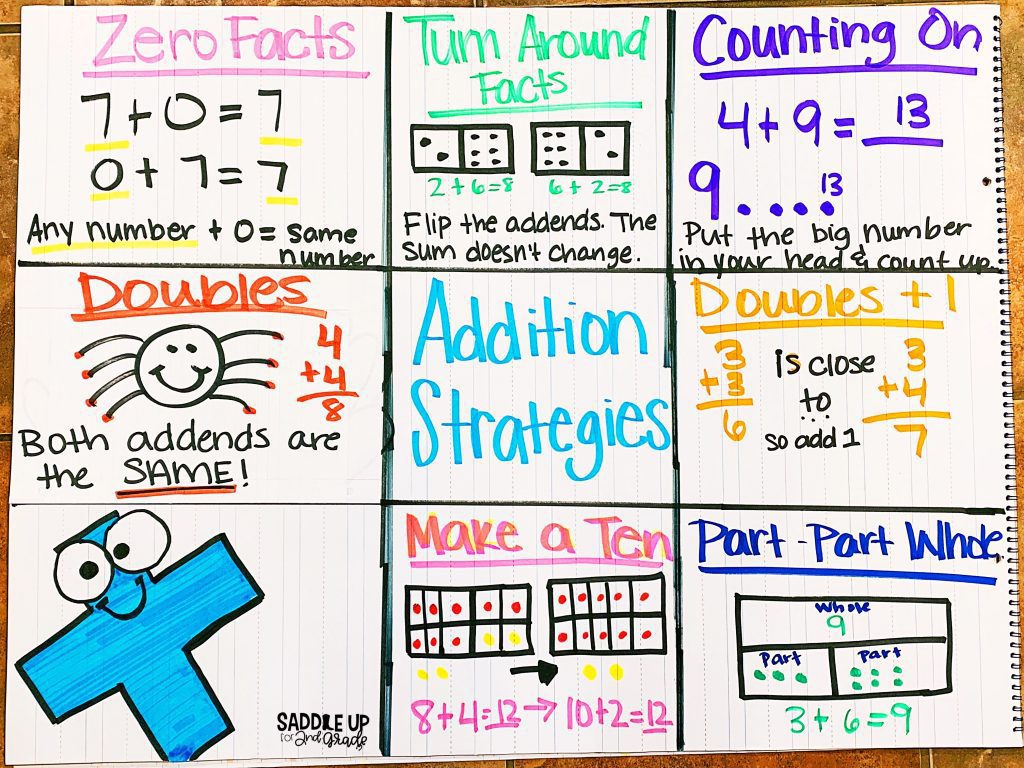
Let’s take a closer look at these 7 different mental math strategies!
This strategy is just as it sounds. I tell my students that “Any number + 0 = the same number.” Students are taught that when a zero is added to any number, there is no change.
Once we learn this strategy, we then add it to our anchor chart!
The key is to keep it simple. For this strategy, students are taught to flip the addends, but the sum does not change! These are different from face families because subtraction is not involved yet.
Having visuals and manipulatives are very important to grasp this basic concept. I like to use dominos and a number line for them to practice with.
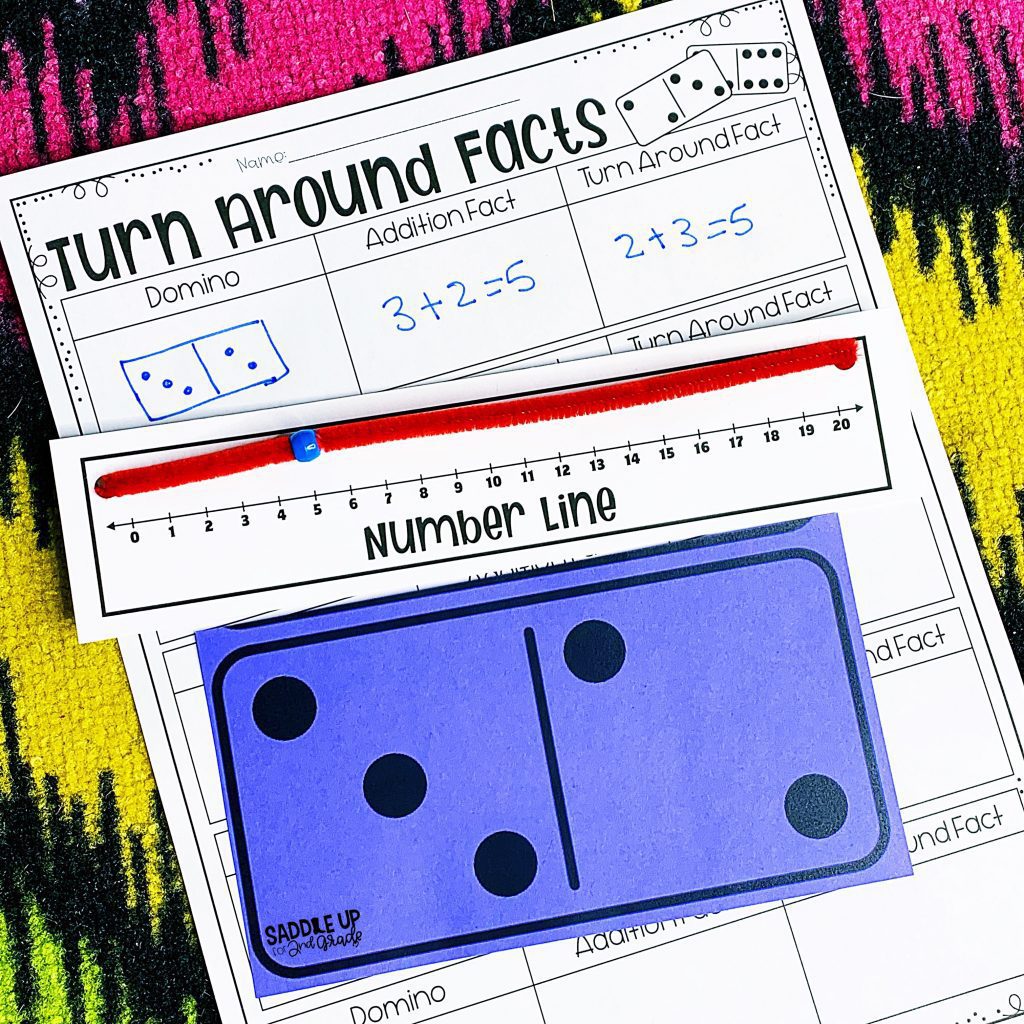
Not only are dominos and number lines great for reinforcing this strategy, but students also love to use spinners, dice, and other manipulatives too.
Double facts are when both addends are the same number. (i.e. 5 + 5) To introduce the doubles strategy, you need to ensure children can experience the math with hands-on activities. The key to this concrete experience is allowing children to see the numbers as quantities rather than symbols. An example of this could be using pictures or taking a walk around your school.

Another great way to practice doubles is by using strips of colored paper and a hole punch. Students will fold their paper in half horizontally and use the hole punch to create any number of holes in their paper. Once they open it back up, there is double the number of holes they originally made!
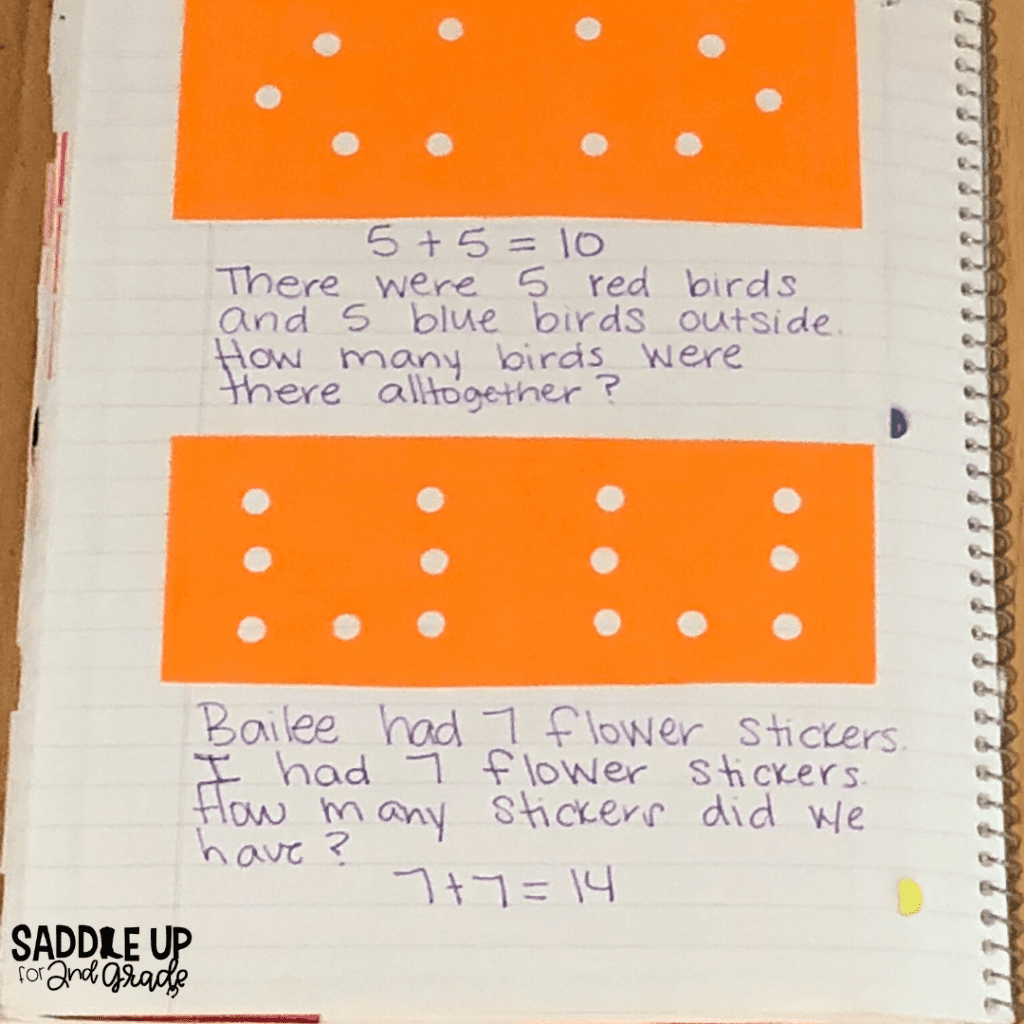
Another addition strategy for tackling facts is using doubles plus 1. This involves decomposing one addend to make a double with the other addend. For example 5 + 6 is the same as 5 + 5 plus 1 more.
Before implementing this strategy, be sure to review that double facts are when both addends are the same number. Write 3+3 and 3 +4 on the board. Explain the 4 is one more than 3. Since we know that 4 is one more than 3, then the correct answer to 3+4 is only one more than 3+3.
When teaching this strategy, I like to do a whole group lesson with the doubles and doubles +1 cards. Students sort the correct facts under the correct header of the pocket chart. Once sorted correctly, they can then solve!
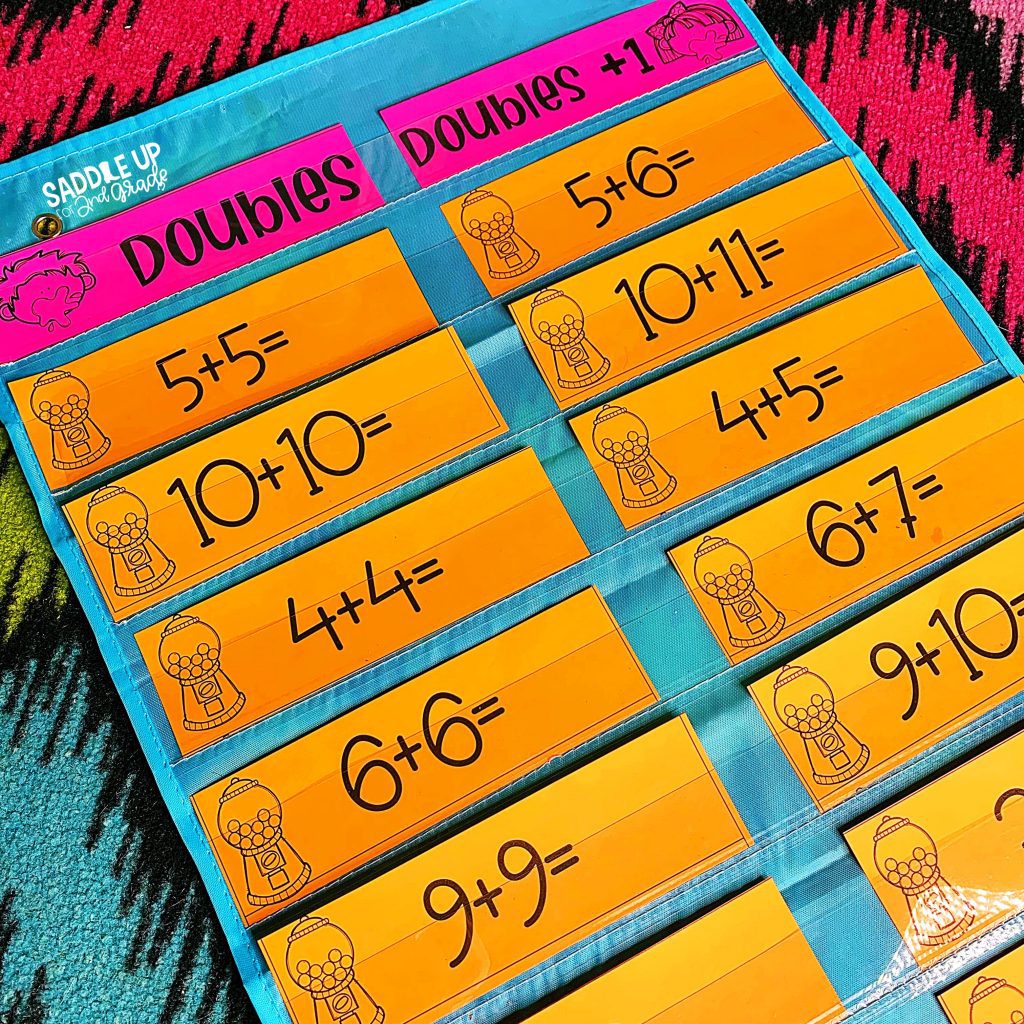
Ten is a friendly number. This means that ten is a number that’s easy to work with and easy to add or subtract. Anytime students can make a sum of ten, they’ve helped themselves tremendously. I want my students to have a strong grasp of sums of ten. I want them to be able to commit sums of ten to memory, because knowing these combinations will help them in countless ways as they work more complex addition problems.
A fun way to practice making sums of 10 is by using a pipe cleaners and beads.
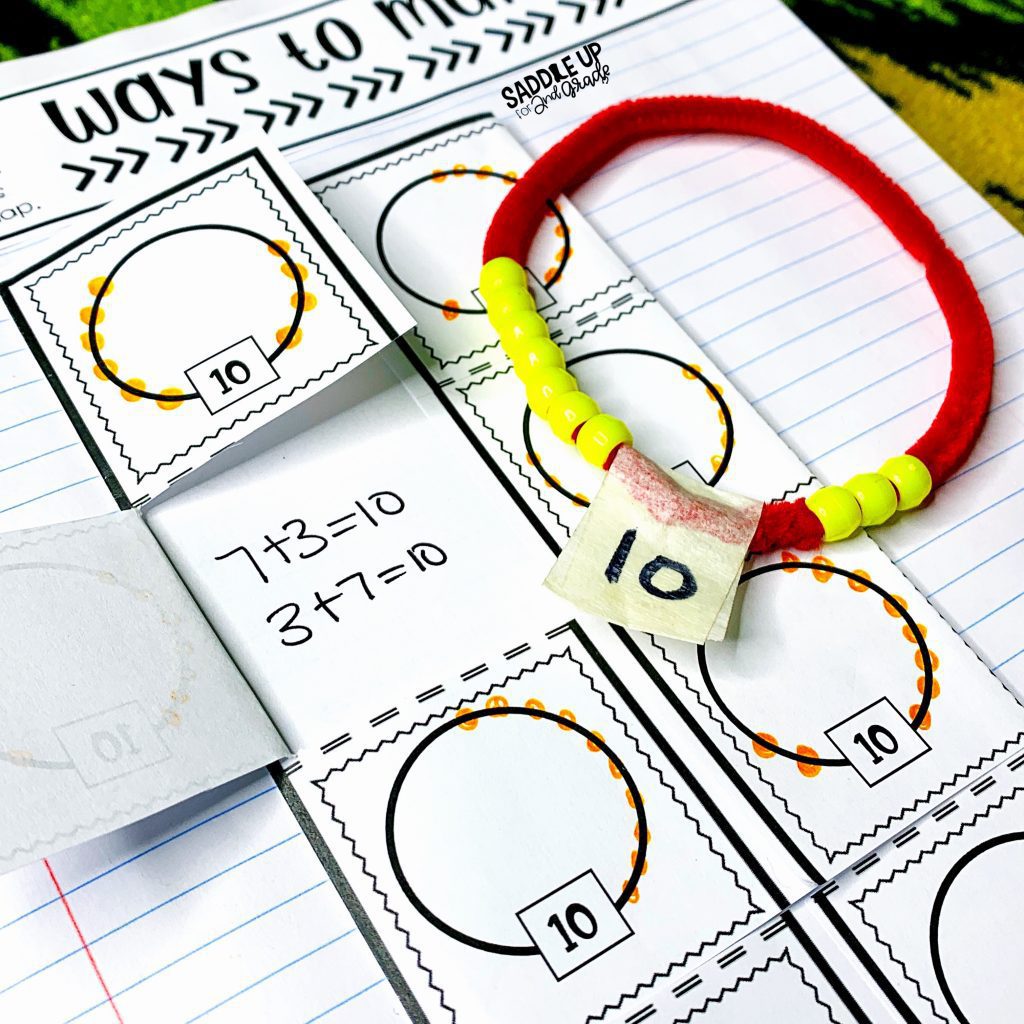
The make-ten strategy is great for addition! This math fact strategy helps students understand place value and the relationships between different numbers. Students use friendlier numbers to find the sum they need. This is especially helpful when students need to add big numbers
Ten-frames help students develop a good “mind picture” for the make-ten strategy because our place-value system is based on making groups of ten.
Double Ten Frames are a great math tool for introducing this strategy.
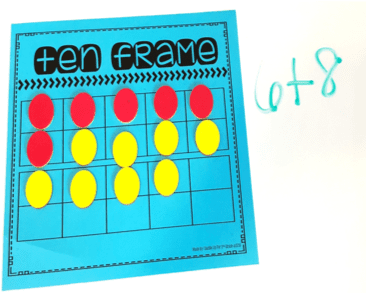
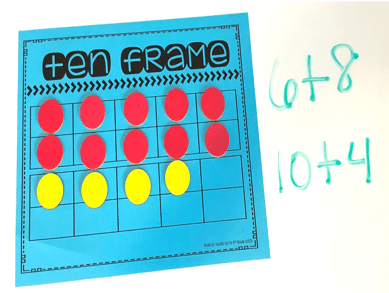
The count on addition strategy is a simple one that should be introduced with students are first learning math fact fluency. The count on strategy teaches students to put the big number in their head and count up…
For example, 6 + 5 = 11. Students would put the number 6 in their head because it is the largest of the addends and count on 5 more.
Interactive number lines or open number lines are great math tools to incorporate with this strategy. I like to use slider bags because they can serve so many purposes. The bag itself is dry erase which is perfect for solving problems and the slider tab allows students to easy move along the number line as they’re counting.
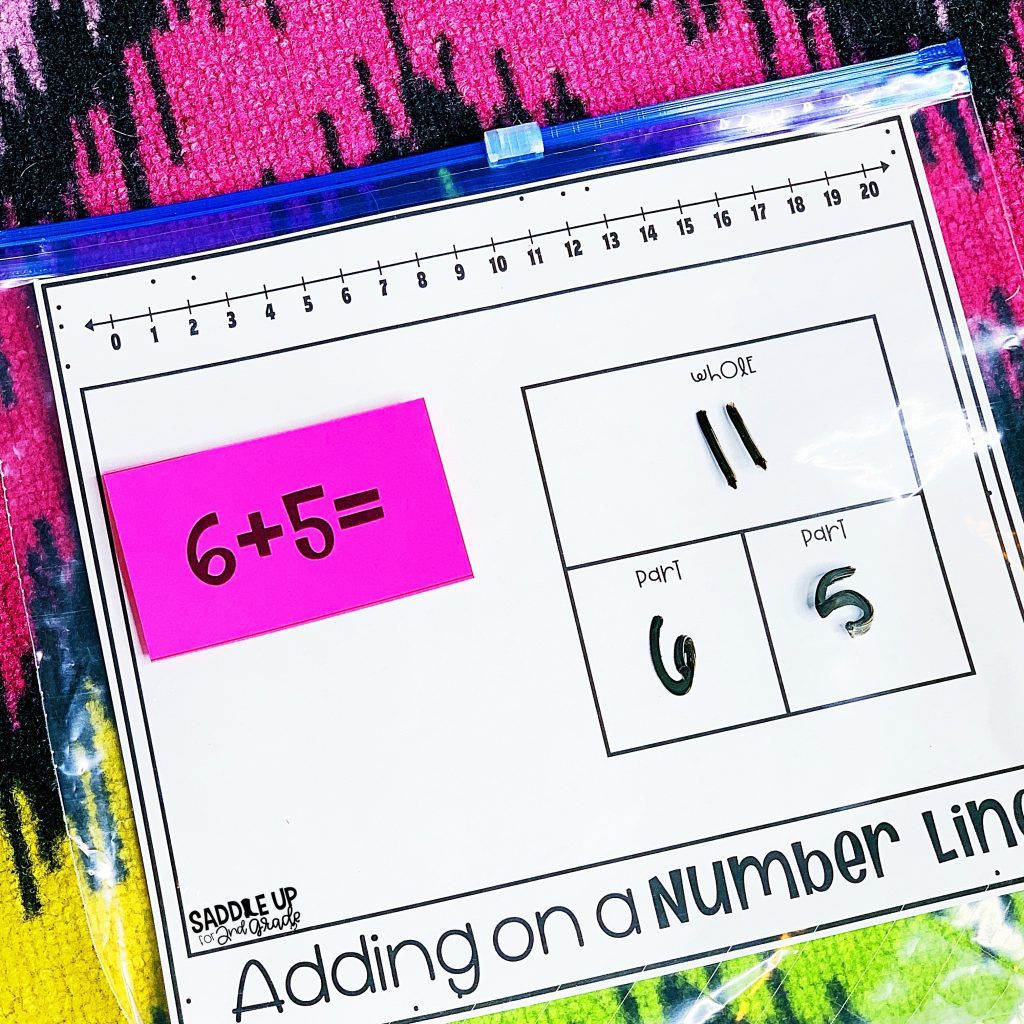
Teaching part-part-whole relationships are critical while teaching addition. For students to build a solid understanding of addition they need to understand what each number represents. Understanding part-part-whole is a much more effective strategy to teach for problem solving than keywords and for practicing missing addends.
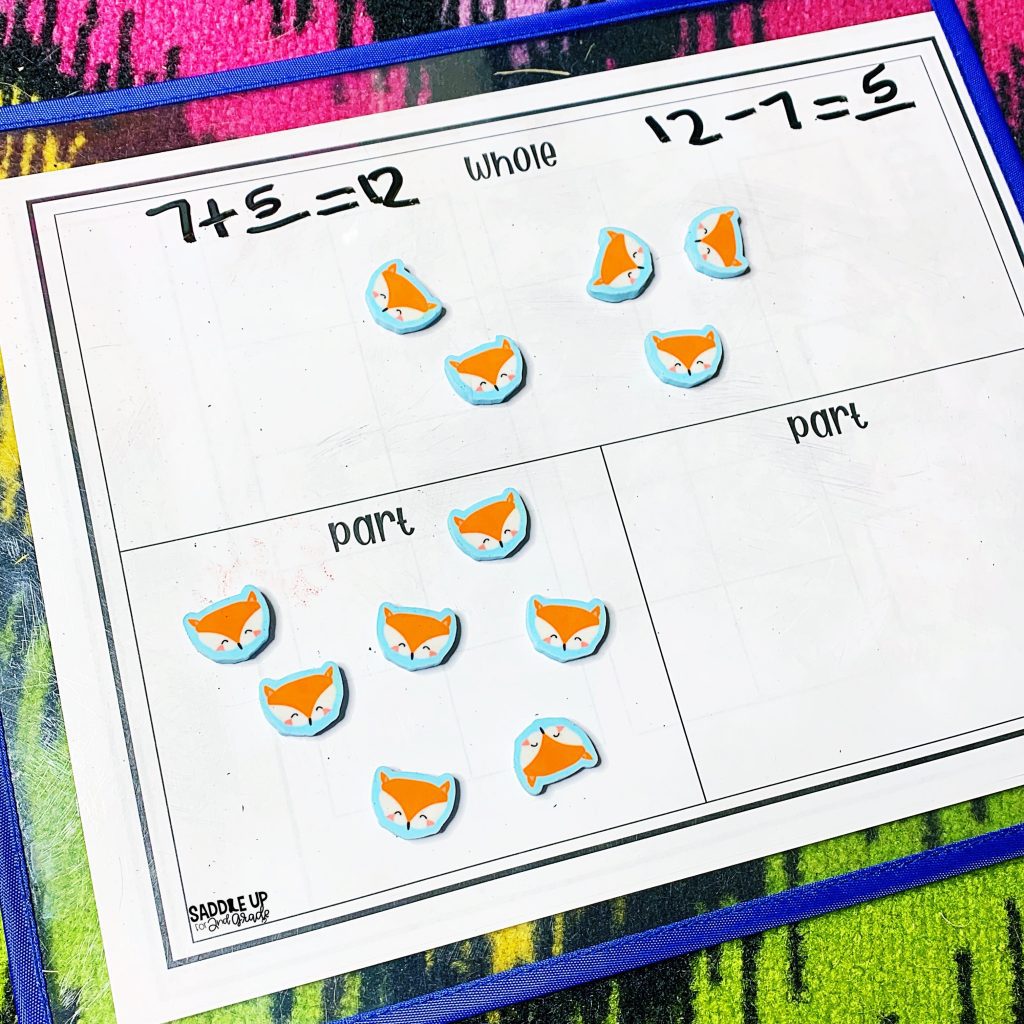
Whew! That may seem like a lot of information to process. We all learn concepts in different ways and the mental strategies for addition that I have shared are what I have found to be beneficial for my own 2nd grade students. Allow your students to choose the method that works best for them and have them stick with it. Once they have found a method that they are comfortable with, it is important to provide them with multiple opportunities to practice.
All of the activities above can be found in my Addition and Subtraction Guided Math unit. If you’re looking for addition strategies for 2-digit addition, you can read about them in this blog post.
Want to save these ideas for later? Pin the image below.

Math should be fun, not stressful. Ditch the timed math fact tests and replace them with math games that will help your students learn and retain information more effectively.
© Saddle Up for 2nd Grade • Website by KristenDoyle.co
